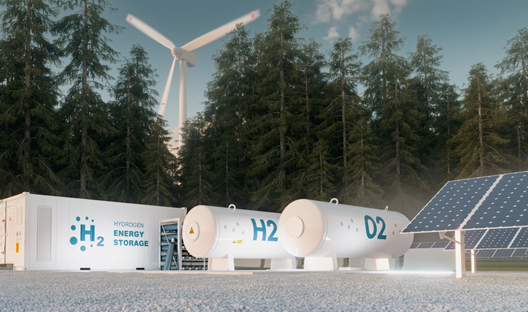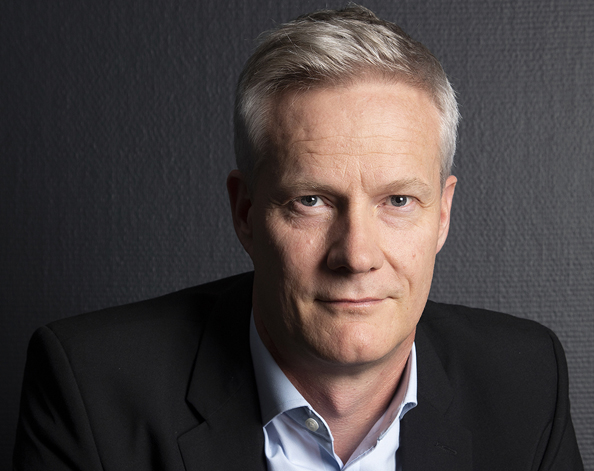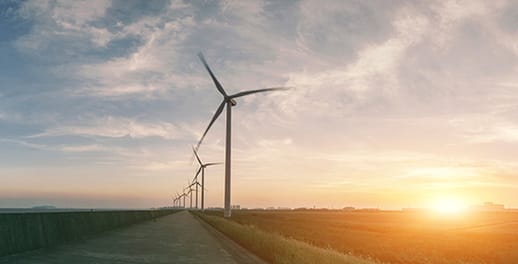“It’s going to be uncontrolled. It’s the private sector saying this is what we’re going to do and then doing it. Some scenarios have the grid doubling or tripling in generation capacity size in the next 20-30 years. That should attract huge investment and push the longer-term GDP growth views from current levels of 1.7% to 2.5%.”
These were the views of Intellidex’s Peter Attard Montalto during a recent webinar, hosted by Investec, to discuss the implications of government’s decision to increase the limit for embedded power generation without a licence from 1MW to 100MW.
It’s hard not to get excited about the possibilities.
Martin Meyer, head of power and infrastructure at Investec Bank and panel moderator, estimates that there are roughly 10 gigawatts (GW) of shovel-ready renewable energy projects that could come online in the short to medium term. That’s almost 20% more generation capacity than we currently have in SA.
Prefer to listen on the go?
Listen to a podcast of the full discussion between Investec's Martin Meyer, Sibanye-Stillwater's Jevon Martin, Intellidex's Peter Attard Montalto and Pele Energy's Fumani Mthembi.
Winds of change
An average shopping centre might need 3MW of power. A small gold mine about 9MW. A multinational manufacturer that sells beer (when they can) uses around 190MW.
Under previous regulation, SA businesses of this ilk could only produce up to 1MW under their own sail without the need for a generation licence. To generate more was theoretically possible but practically not. That left many reliant on power from the Eskom grid, which hasn’t been stable enough to support current operations or to encourage further investment. Economic growth has suffered as a result, as have our people. The realisation that this status quo is unsustainable looks to have finally landed.
“There was a very strong push from business, which labour has put its weight behind, to see a more liberalised energy industry that could crowd-in investment, causing local industrialisation and jobs growth at a much faster rate than is currently possible,” said Montalto.
That businesses could have uninterrupted power is plainly positive for their confidence and margins. But for SA optimists thirsty for good news, it’s the knock-on effects of these self-generation projects that are most quenching.

Some scenarios have the grid doubling or tripling in generation capacity size in the next 20-30 years. That should attract huge investment and push the longer-term GDP growth views from current levels of 1.7% to 2.5%.
The power of predictability
“I think the biggest benefit is the indication by government that they're willing to consider private sector participation in the supply of electricity. It potentially unlocks benefits ranging from the cessation of load shedding, to employment creation, to local supply chain development, to creating a national advantage for South Africa by leveraging our substantial land, wind and solar resources,” mused Jevon Martin, who leads the energy and decarbonisation strategy at Sibanye Stillwater, a precious metals miner.
SA corporates are unlikely to let this opportunity pass them by, for two reasons:
- They can secure reliable and affordable energy for the long term
- It’ll help them stay competitive in a global economy courting climate-friendly businesses.
If our private sector is motivated to produce their own clean power and there’s nothing holding them back, it’ll inject predictability into the entire power generation value chain. That’ll be a boon for the socioeconomic fabric of our country because investment loves certainty.
Fumani Mthembi, co-founder of the Pele Energy Group, articulated the importance of this idea when she said, “Historically, the focus has been on consumers having enough power. But if we want to industrialise our economy, we need to think about the manufacturers. They need visibility of long-term demand to be able to deliver parts and services reliably. And that requires a high level of coordinated planning and predictability.”
If that comes to pass, then a vast web of SA businesses will have order books they can trust, giving them the confidence to invest in additional capacity. In turn, that should translate into more robust business models and slicker access to finance.
“Given the certainty in the rollout of renewables, I think banks will find it easier to understand the respective business plans, to foresee how revenues are going to be earned and to subsequently bank some of those smaller businesses,” said Investec’s Meyer.

If we want to industrialise our economy, we need to think about the manufacturers. They need visibility of long-term demand to be able to deliver parts and services reliably. And that requires a high level of coordinated planning and predictability.
Amped for decarbonisation
It’s estimated that a planned carbon intensity border tax, levied by the EU, will add about 300 million euros to the cost of SA goods exported into the bloc each year. It’s partly why we need to reduce our country’s carbon footprint.
Implementation of the Integrated Resource Plan (IRP) will see 30-35GW of Eskom baseload power decommissioned over the next two decades or so, replaced by 100GW of renewables. This transition is necessary for SA to meet its 2030 decarbonisation goals and to remain competitive on the global stage. With the private sector now involved, those targets look more attainable.
In addition, electricity produced from solar and wind sources is today the cheapest form of electricity in SA and ensures that intensive energy users will remain competitive internationally.
But as Martin of Sibanye Stillwater points out, battery storage costs are still too high to rely wholly on wind and solar for round-the-clock electricity.
“We need to look at the incorporation of gas at a national scale to reduce overall grid carbon intensity.
It is important to realise that electricity consumption makes up less than 30% of the entire country’s energy consumption and green hydrogen will also have a major role to play because it is a versatile energy carrier which will help to decarbonise industry energy applications in the cement and steel industries, long-distance road and maritime transportation, and aviation.”
What are the key ingredients for producing low-cost green hydrogen? Land, wind, and sun. We could even end up exporting the energy-laden gas.

Hydrogen – the fuel of South Africa’s green future
Listen to the key takeouts from an Investec-sponsored webinar on renewable hydrogen and green powerfuel opportunities for South Africa, featuring speakers from the South African DTI, the World Bank, Sasol, Toyota South Africa and Linde.

It potentially unlocks benefits ranging from the cessation of load shedding, to employment creation, to local supply chain development, to creating a national advantage for South Africa by leveraging our substantial land, wind and solar resources.
Potential short circuits
Of course, it’s not straightforward. We’re not in Scandinavia.
Take the concept of ‘wheeling’- the ability to use existing transmission lines to distribute and sell electricity from your grid to users in other locations. While up to 100MW of embedded power may be produced without licence, the feasibility of any such project is contingent on the producers being able to distribute the electricity generated.
Montalto said that increasing the threshold is, arguably, the easy part. “Wheeling is more complicated. And that’s really where the bankability and success of these projects lies. To de-risk them, we need producers to be able to sell their electricity to traders. We need to see the allowance of broader, many-to-many wheeling arrangements.”
Restrictive wheeling policies could be one problem. Another is whether the existing transmission infrastructure will be sufficient to distribute the additional power.
Eskom is going to need to raise hundreds of billions of rands in the coming years to facilitate the transition to a cleaner energy mix. If their balance sheet deteriorates and funding dries up, transmission bottlenecks will blunt the huge potential of a deregulated, decentralised energy market.
“We're already seeing constraints on the transmission network that are sterilising shovel-ready sites, which is of material concern when you look at the number of industry projects in the pipeline. Another worry is that we run out of sites,” said Martin.
To be sure, these self-generation projects will not be completely free of politics. The private sector’s newfound autonomy to produce power is conditional on it driving positive socioeconomic change in the communities in which their solar arrays and wind farms call home. If that outcome is not forthcoming, expect friction to return.

Given the certainty in the rollout of renewables, I think banks will find it easier to understand the respective business plans, to foresee how revenues are going to be earned and to subsequently bank some of those smaller businesses.
We need this to work
The unrest in early July was a reminder that we will not have stability in our country until poverty and inequality are tackled. Hoarse is the call for government to make business-friendly policy changes that would enable the panacea of economic growth. The deregulation in question is perhaps the best answer we’ve seen from government to date.
Mthembi’s excitement was palpable in response to Meyer’s question about the potential socioeconomic impact of these projects. “The benefits are massive. Many of the periphery communities earmarked for solar and wind projects have historically found themselves excluded from economic and social development. Current legislation states that they must participate in the equity structure of these self-generation projects. They will earn long-term dividends that can be reinvested in education, health and infrastructure development within their communities.”
If better coordination and planning do become a feature of these builds, skills development that foreruns the build of an embedded power grid is a tantalising opportunity to create localised, sustainable jobs.
Because we want to
We do things better when we want to do them, rather than when we have to do them.
In the past, the private sector’s motivation for generating their own power was centred on the vulnerability of the Eskom grid. Now though, it’s motivated by the allure of the sustainably lower electricity costs and global competitiveness on offer.
Similarly, our government does not like being told by the developed world that it needs to clean up its energy mix to combat climate change. But they needn’t look at it through that lens. Instead, they can table their actions – like the welcome 100MW bombshell – as a commitment to material job creation.
This is real, empowering deregulation. Let’s make the most of it.
Get Focus insights straight to your inbox




